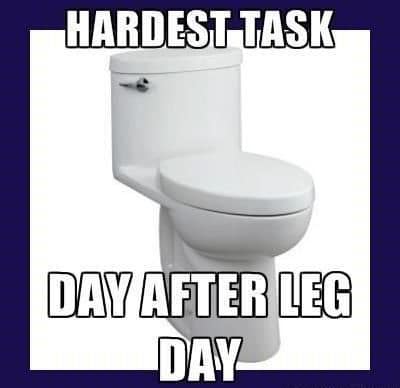Training intensity means different things to different people.
On the one hand, intensity can refer to the weight you are lifting and its relationship to your one repetition maximum, or 1RM for short.
The closer the weight is to your 1RM is, the more intense your workout is said to be. For example, weights of 90-95% of your 1RM represent a very intense workout. In contrast, 60-85% is a moderate-intensity workout. Workouts with less than 60% of your 1RM are deemed low intensity. Olympic weightlifters and powerlifters tend to use this definition of intensity.
In contrast, intensity can also mean how hard your workout is. For most bodybuilders, that’s the kind of intensity that matters. In this scenario, intensity can be measured on a scale of one to ten, with one being easy and ten being the highest level. This is called the rating of perceived exertion, or RPE for short.
The closer you take your set to failure, the nearer to RPE ten you get, and the more intense your workout is. High-intensity workouts are usually accompanied by plenty of pain, which is the result of oxygen starvation and lactic acid accumulation.
Level Up Your Fitness: Join our 💪 strong community in Fitness Volt Newsletter. Get daily inspiration, expert-backed workouts, nutrition tips, the latest in strength sports, and the support you need to reach your goals. Subscribe for free!
Some bodybuilders are not content with stopping at failure and use set-extending high-intensity training methods to make their workouts even more torturous.
In this article, we reveal the seven most intense and painful bodybuilding methods.
These methods are not suitable for beginners and are best left to experienced bodybuilders.
You have been warned!
The 7 Most Intense Bodybuilding Methods
Are you ready to take your training to the next level? Here are seven of the most intense bodybuilding methods. Be warned; they’re not for the faint of heart and will leave your muscles tired, sore, and crying for mercy. But that’s the price you’ll have to pay if you want to take your muscles to their limit and beyond!
1. Drop Sets
Drop sets are a simple but brutally effective way to ramp up the intensity of your workout. Best of all, you can use drop sets with any exercise where you can reduce the weights quickly, i.e., machines and dumbbells. They’re not so good for barbell exercises unless you have plenty of fixed-weight barbells to use or spotters willing to strip plates off your bar.
The idea behind drop sets is quite simple. During any exercise, if you do enough reps, your muscles will eventually fail, and your set will come to a grinding halt. However, your muscles are not entirely fatigued.
Instead, they are simply too tired to generate enough force to lift whatever weight you are using. So, to do more reps, you just lower the weight and continue.
Lowering or dropping the weight means you can extend your set well beyond where you would typically have to stop, exhausting even more muscle fibers.
Here’s an example:
- 12 reps 120 pounds (can’t do 13 reps)
- Drop the weight
- 9 reps with 105 pounds (can’t do 10 reps)
- Drop the weight
- 6 reps with 90 pounds (can’t do 7 reps)
Ideally, the weight reduction should be about 10-15%. Still, there is no need to be so precise, and each drop may be determined by the available dumbbell or machine weight denominations. Take each drop set to failure, and don’t worry about counting reps. The number of reps may vary depending on fatigue and the size of each drop.
For maximum intensity, reduce the weight and get back to lifting as quickly as possible. Any delay means your muscles will start to recover, making this method less effective.
Related: Build Muscle Faster with Drop Sets: The Ultimate Guide
2. Supersets, Trisets, and Giant Sets
Another way to make your workouts more intense is to do two or three exercises back to back. Two exercises are a superset, while three is a triset. Four or more exercises is a giant set.
There are lots of different superset, triset, and giant set configurations, such as pre-exhaust and agonist-antagonist. Still, if you want to maximize intensity, the paired or grouped exercises should target the same muscle, albeit using a different movement.
Just a small change in movement will allow you to call on unused muscle fibers so you can continue beyond your usual failure point.
Here’s an example:
Or:
- Pull-ups
- Bent-over rows
Or:
- Bench press
- Dumbbell flyes
- Push-ups
Move quickly from one exercise to the next to minimize recovery. Only rest after completing the final exercise of your super/tri/giant set. For best results, make sure you take each exercise to failure.
Related: Learn more about supersets in our Ultimate Guide!
Level Up Your Fitness: Join our 💪 strong community in Fitness Volt Newsletter. Get daily inspiration, expert-backed workouts, nutrition tips, the latest in strength sports, and the support you need to reach your goals. Subscribe for free!
3. Burn Reps
Burn reps, also known as partials, are very painful! They get their name because your muscles burn like crazy. You can use this simple bodybuilding method with most exercises.
Simply rep out until failure on your chosen exercise. Then, without pausing, do as many short-range partial reps as you can until the burning becomes unbearable. Because you’ll be moving over a much shorter range of motion, you should be able to do quite a lot of burn reps – 20 or more.
For example:
- Leg extensions to failure
- Straighten your legs and then do as many partial reps as you can tolerate, bending and extending your knees by just a few inches.
Don’t do partial reps for your entire set; that would be CHEATING! Instead, always do as many full reps as you can before transitioning into burn reps. Take care to use a spotter with this method, as your muscles can and will fail suddenly.
4. Myo-Reps
The aim of myo-reps is to keep your muscles closer to failure for longer. This increases workout intensity, causes a lot of fatigue and burning, and should trigger plenty of hypertrophy. You can use myo-reps with almost any exercise.
To use the myo-reps method:
- Activation set – choose a light to moderate weight that will force you to fail somewhere in the 12-20 rep range. Rep out until you reach failure, making a mental note of how many reps you do.
- 3-5 mini-sets – rest 10-15 seconds, and then do 25% of the reps of your original set. So, if you did 12 reps, pump out another three.
- Repeat – rest another 10-15 seconds, and then do a second “mini set.” Continue until you cannot do three reps or complete a total of five mini sets.
Because myo-reps are so intense, you only need to do one run-through per exercise. This makes sense because you’ll probably accumulate 20 or so reps that take you very close to failure, and more would simply be overkill.
Want to know more about myo-reps? Check out this myo-rep workout!
5. Occlusion Training

Occlusion or Blood Flow Restriction (BFR) training is a training method that reduces oxygenated blood flow to your muscles. This causes an increase in lactic acid production and means your muscles fatigue faster than usual. It also produces a bone-deep burn and a wicked pump!
You can use blood flow restriction training to work your arms and legs, but it’s not really suitable for training your torso muscles. To do BFR training, simply tie wide elasticated bands above the muscle you want to train to partially restrict blood flow and then do your workout as usual. High reps paired with short rests work best, but that isn’t your only option.
Learn more about this super-intense training method in this guide.
6. Rest-Pause Training
This is a less structured but similarly effective version of myo-reps. Rest-pause training extends your set by giving you a mini-break when you reach failure.
Simply pump out as many reps as you can, rest for 10-15 seconds, and then crank out another couple of reps. Then, rest another 10-15 seconds and repeat again. Two or three extra micro sets should be sufficient for most exercisers.
Rest-pause training is also a useful way to do the same number of reps per set, despite accumulating fatigue.
For example:
- 1st set – 10 reps
- 2nd set – 8 reps, plus two rest-pause reps
- 3rd set – 6 reps, plus four rest-pause reps
- 4th set – 5 reps, plus five rest-pause reps
7. Forced Reps
When you reach muscular failure, you have NOT entirely exhausted all your muscle fibers. However, you have fatigued enough of them that you cannot do any more reps with the weight you are using.
Using forced reps means that you can extend your set beyond normal failure to hit those unfatigued muscle fibers. You do this by using a free limb or, more usually, a training partner to help you continue your set.
For example, imagine you are bench pressing 140 pounds. You manage eight reps but are unable to do a ninth.
Why?
Because you can no longer generate 140 pounds of force. However, you could still generate 120. Your training partner lends you a little help (about 20 pounds worth), so you can crank out a couple more reps.
This is a very stressful form of training, so you should only do a couple of forced reps per set. Also, your training partner should never end up lifting more weight than you are. Just a few pounds of assistance should be all that’s needed to help you complete another couple of reps.
Intense Bodybuilding Methods – Wrapping Up
Bodybuilders are notoriously masochistic and often enjoy pushing themselves to the limit of their strength and endurance. The subsequent fatigue and muscle soreness are badges of honor to be worn with pride!
That said, if you’ve been training for a couple of years, straight sets may be starting to lose their effect, and it could be time to kick your workouts up a notch to maintain your progress.
High-intensity bodybuilding methods like rest-pause, burn reps, and occlusion training will challenge your muscles in a whole new way, forcing them to keep growing bigger and stronger.
Yes, they hurt more, too, but that’s the price you have to pay if you want to train beyond failure.
If you are stuck in a workout rut and want to shock your muscles back into growth, these are the seven most intense bodybuilding methods you can use.











Bonsoir méthode très intéressante je vais la mettre en application merci